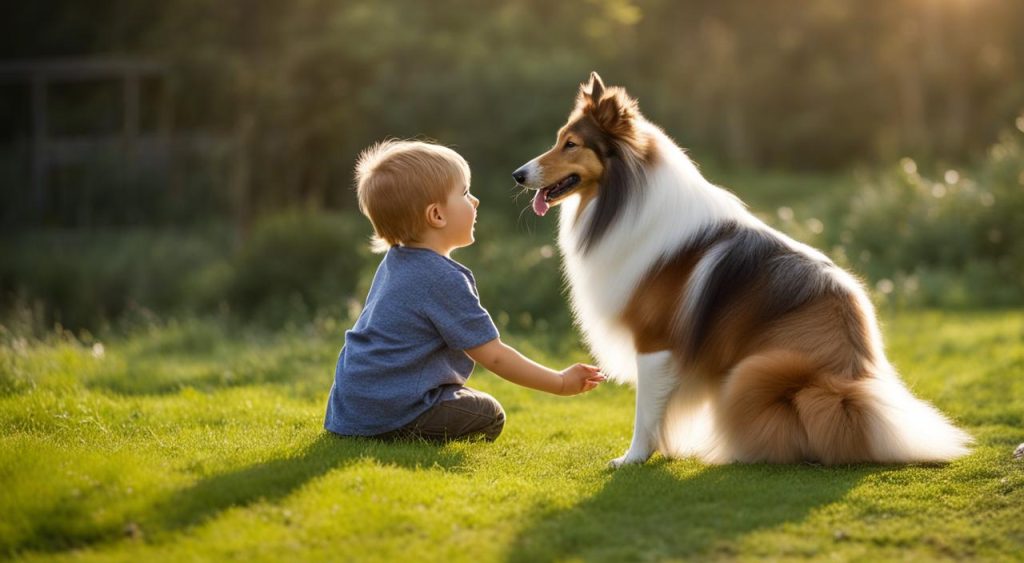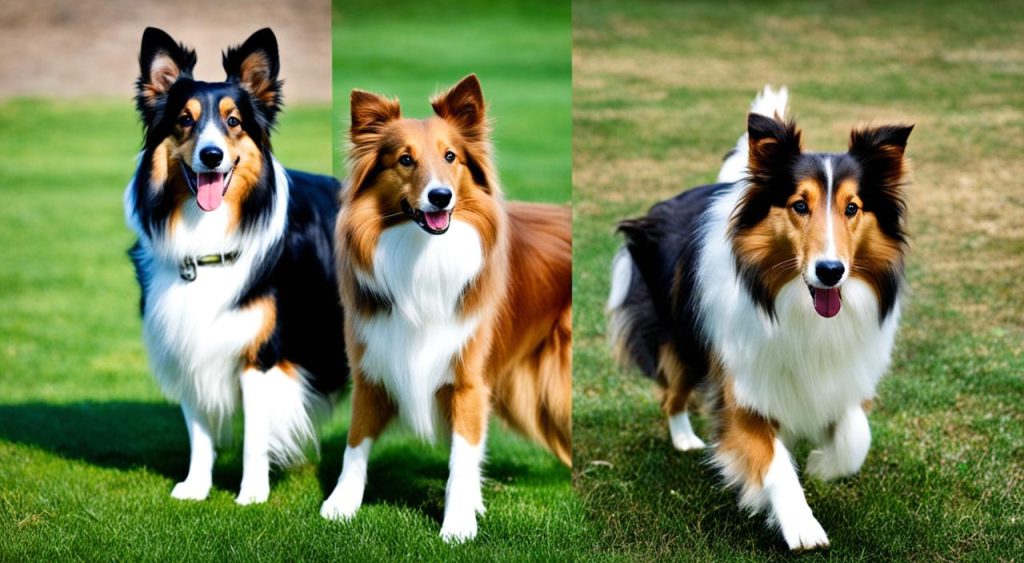Shetland Sheepdogs, also known as Shelties, are beloved for their shaggy double coats and adorable looks. But if you’re considering getting a Shetland dog or already have one, you might be wondering, do Shetland dogs shed? Let’s explore the truth about Shetland dog shedding and provide you with essential grooming tips to manage your Sheltie’s coat effectively.
Shetland Sheepdogs have long, thick double coats that can be a challenge for maintenance. Unlike low shedding dog breeds or hypoallergenic dogs, Shelties do shed. While they may not shed as heavily as larger breeds like German Shepherds or Newfoundland Dogs, their double coat, rapid hair growth cycle, and longer fur make them shed throughout the year.
Managing Shetland dog shedding requires proper nutrition and regular grooming. Shelties should be fed a healthy, balanced diet to support the condition of their coat. Additionally, regular brushing is key to remove loose fur and prevent tangles. It is recommended to brush your Sheltie at least two to three times a week, with more frequent brushing during shedding seasons.
When grooming your Shetland Sheepdog, consider using slicker brushes, metal combs, and shedding tools or undercoat rakes to remove loose hair effectively. However, it’s important to note that shaving or clipping their coat is not recommended as it can interfere with their natural insulation and protection from the elements.
Key Takeaways:
- Shetland Sheepdogs, or Shelties, do shed due to their double coat and rapid hair growth cycle.
- They are not considered low shedding or hypoallergenic dogs.
- Proper nutrition and regular brushing are essential for managing Shetland dog shedding.
- Brush your Sheltie at least two to three times a week and more frequently during shedding seasons.
- Use slicker brushes, metal combs, and shedding tools for effective grooming.
Tips for Managing Shetland Dog Shedding
To minimize excessive shedding in Shelties, a three-phase approach can be followed:
- Focus on the diet: Ensure your Shetland Sheepdog is eating a healthy, balanced diet made up of high-quality dog food. Consult with a veterinarian to select the right food for your Sheltie. A nutritious diet can contribute to a healthier coat and reduce shedding.
- Regular grooming is essential: Brushing your Shetland Sheepdog’s coat regularly helps remove dead fur and improves its overall condition. For Shelties, it is recommended to brush them at least two to three times a week. During shedding seasons, using shedding tools or undercoat rakes can be more effective in removing loose hair. Avoid over-bathing your Sheltie, as it can dry out the coat and lead to more shedding.
- Vacuuming to keep your home fur-free: Shetlands Sheepdogs will still shed, but effective management can significantly reduce the amount of fur in your home. Regularly vacuuming your living space helps to keep it clean and free of dog fur. Consistency in the first two phases, focusing on diet and regular grooming, will likely reduce the need for extensive vacuuming.
By following these tips for managing Shetland dog shedding, you can help minimize excessive shedding and keep your Sheltie’s coat healthy and beautiful.
The Temperament and Characteristics of Shetland Sheepdogs
Shetland Sheepdogs, or Shelties, are highly sought-after for their intelligence, loyalty, and elegant appearance. They are known for their soft and sweet temperament, making them wonderful companions for individuals and families alike. Shelties generally get along well with strangers and other animals, although they may initially be cautious around unfamiliar faces. To ensure they develop confidence, extensive socialization from an early age is highly recommended.
One of the standout qualities of Shetland Sheepdogs is their trainability. These dogs excel in obedience and agility, making them a favorite among dog trainers. They are quick learners and respond well to positive reinforcement training methods. With consistent and gentle guidance, Shelties can master a wide range of skills and commands.
As with any breed, Shetland Sheepdogs have their unique set of characteristics to consider. Some Shelties may be prone to anxiety and separation anxiety when left alone for extended periods. Proper socialization, crate training, and gradually increasing alone time can help alleviate these issues. Excessive barking can also be a behavioral challenge in Shelties, which can be managed through training and providing mental and physical stimulation.
Grooming is an essential aspect of caring for Shetland Sheepdogs. Their long, double coat requires regular brushing to prevent matting and keep it in good condition. Additionally, Shelties shed moderately and may experience seasonal shedding. Adequate grooming practices, including regular brushing and occasional bathing, will help minimize shedding and maintain their coat’s health and appearance.
It is important to note that Shetland Sheepdogs may be prone to certain health issues. These can include hip dysplasia, eye conditions, and allergies. Regular veterinary check-ups, a balanced diet, and proper exercise are crucial for their overall wellbeing. By providing them with the care, training, and attention they need, Shetland Sheepdogs can thrive as loving and loyal companions.





